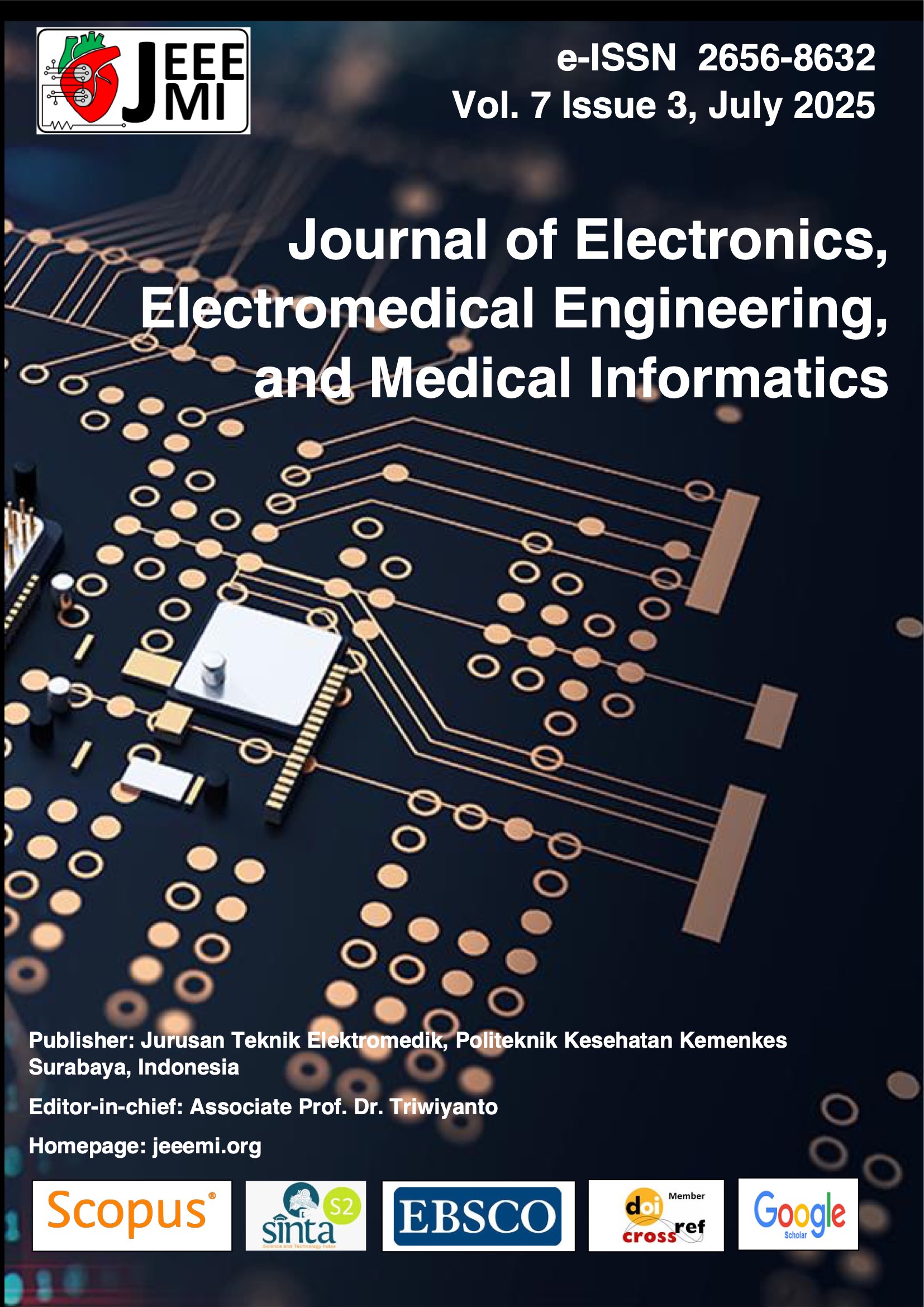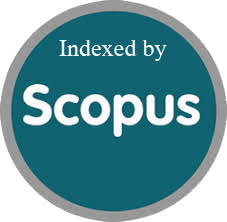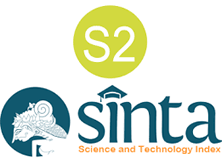Performance Comparison of Extreme Learning Machine (ELM) and Hierarchical Extreme Learning Machine (H-ELM) Methods for Heart Failure Classification on Clinical Health Datasets
Abstract
Heart failure is one of the leading causes of death worldwide and requires accurate and timely diagnosis to improve patient outcomes. However, early detection remains a significant challenge due to the complexity of clinical data, high dimensionality of features, and variability in patient conditions. Traditional clinical methods often fall short in identifying subtle patterns that indicate early stages of heart failure, motivating the need for intelligent computational techniques to support diagnostic decisions. This study aims to enhance predictive modeling for heart failure classification by comparing two supervised machine learning approaches: Extreme Learning Machine (ELM) and Hierarchical Extreme Learning Machine (HELM). The main contribution of this research is the empirical evaluation of HELM's performance improvements over conventional ELM using 10-fold cross-validation on a publicly available clinical dataset. Unlike traditional neural networks, ELM offers fast training by randomly assigning weights and analytically computing output connections, while HELM extends this with a multi-layer structure that allows for more complex feature representation and improved generalization. Both models were assessed based on classification accuracy and Area Under the Curve (AUC), two critical metrics in medical classification tasks. The ELM model achieved an accuracy of 73.95% ± 8.07 and an AUC of 0.7614 ± 0.093, whereas the HELM model obtained a comparable accuracy of 73.55% ± 7.85 but with a higher AUC of 0.7776 ± 0.085. In several validation folds, HELM outperformed ELM, notably reaching 90% accuracy and 0.9250 AUC in specific cases. In conclusion, HELM demonstrates improved robustness and discriminatory capability in identifying heart failure cases. These findings suggest that HELM is a promising candidate for implementation in clinical decision support systems. Future research may incorporate feature selection, hyperparameter optimization, and evaluation across multi-center datasets to improve generalizability and real-world applicability.
Downloads
References
M. Di Cesare et al., “The Heart of the World,” Glob. Heart, vol. 19, no. 1, 2024, doi: 10.5334/gh.1288.
A. C. Alba et al., “Risk prediction models for mortality in ambulatory patients with heart failure a systematic review,” Circ. Hear. Fail., vol. 6, no. 5, pp. 881–889, 2013, doi: 10.1161/CIRCHEARTFAILURE.112.000043.
N. R. Jones, A. K. Roalfe, I. Adoki, F. D. R. Hobbs, and C. J. Taylor, “Survival of patients with chronic heart failure in the community: a systematic review and meta-analysis,” Eur. J. Heart Fail., vol. 21, no. 11, pp. 1306–1325, 2019, doi: 10.1002/ejhf.1594.
C. Zhou et al., “Modeling methodology for early warning of chronic heart failure based on real medical big data,” Expert Syst. Appl., vol. 151, pp. 1–27, 2020, doi: 10.1016/j.eswa.2020.113361.
M. Lyle et al., “Predictive Value of the Get With The Guidelines Heart Failure Risk Score in Unselected Cardiac Intensive Care Unit Patients,” J. Am. Heart Assoc., vol. 9, no. 3, 2020, doi: 10.1161/JAHA.119.012439.
D. D. Miller, “Machine Intelligence in Cardiovascular Medicine.,” Cardiol. Rev., vol. 28, no. 2, pp. 53–64, 2020, doi: 10.1097/CRD.0000000000000294.
T. M. A. Monisha Sharean and G. Johncy, “Deep learning models on Heart Disease Estimation - A review,” J. Artif. Intell. Capsul. Networks, vol. 4, no. 2, pp. 122–130, 2022, doi: 10.36548/jaicn.2022.2.004.
A. P. Ariyanti, M. I. Mazdadi, A.- Farmadi, M. Muliadi, and R. Herteno, “Application of Extreme Learning Machine Method With Particle Swarm Optimization to Classify of Heart Disease,” IJCCS (Indonesian J. Comput. Cybern. Syst., vol. 17, no. 3, p. 281, 2023, doi: 10.22146/ijccs.86291.
A. M. Nababan et al., “Extreme learning machine approach on heart abnormalities identification in ECG images,” Int. J. Electron. Telecommun., vol. 70, no. 2, pp. 473–480, 2024, doi: 10.24425/ijet.2024.149568.
J. Wang, S. Lu, S. H. Wang, and Y. D. Zhang, “A review on extreme learning machine,” Multimed. Tools Appl., vol. 81, no. 29, pp. 41611–41660, 2022, doi: 10.1007/s11042-021-11007-7.
A. Alitaleshi, H. Jazayeriy, and S. J. Kazemitabar, “WiFi Fingerprinting based Floor Detection with Hierarchical Extreme Learning Machine,” 2020 10h Int. Conf. Comput. Knowl. Eng. ICCKE 2020, pp. 113–117, 2020, doi: 10.1109/ICCKE50421.2020.9303624.
J. Wang, H. Xu, X. Peng, J. Liu, and C. He, “Pathological voice classification based on multi-domain features and deep hierarchical extreme learning machine,” J. Acoust. Soc. Am., vol. 153, no. 1, pp. 423–435, Jan. 2023, doi: 10.1121/10.0016869.
M. H. Rizky, M. R. Faisal, I. Budiman, and D. Kartini, “Effect of Hyperparameter Tuning Using Random Search on Tree-Based Classification Algorithm for Software Defect Prediction,” vol. 18, no. 1, pp. 95–106, 2024, [Online]. Available: https://doi.org/10.22146/ijccs.90437
A. S. M. Al-Rawahnaa and A. Y. B. Al Hadid, “Data mining for Education Sector, a proposed concept,” J. Appl. Data Sci., vol. 1, no. 1, pp. 1–10, 2020, doi: 10.47738/jads.v1i1.6.
Y. Wang and L. Singh, “Analyzing the impact of missing values and selection bias on fairness,” Int. J. Data Sci. Anal., vol. 12, no. 2, pp. 101–119, 2021, doi: 10.1007/s41060-021-00259-z.
M. Nishom, “Perbandingan Akurasi Euclidean Distance, Minkowski Distance, dan Manhattan Distance pada Algoritma K-Means Clustering berbasis Chi-Square,” J. Inform. J. Pengemb. IT, vol. 4, no. 1, pp. 20–24, 2019, doi: 10.30591/jpit.v4i1.1253.
I. Izonin, R. Tkachenko, N. Shakhovska, B. Ilchyshyn, and K. K. Singh, “A Two-Step Data Normalization Approach for Improving Classification Accuracy in the Medical Diagnosis Domain,” Mathematics, vol. 10, no. 11, pp. 1–18, 2022, doi: 10.3390/math10111942.
H. Henderi, “Comparison of Min-Max normalization and Z-Score Normalization in the K-nearest neighbor (kNN) Algorithm to Test the Accuracy of Types of Breast Cancer,” IJIIS Int. J. Informatics Inf. Syst., vol. 4, no. 1, pp. 13–20, 2021, doi: 10.47738/ijiis.v4i1.73.
S. Sinsomboonthong, “Performance Comparison of New Adjusted Min-Max with Decimal Scaling and Statistical Column Normalization Methods for Artificial Neural Network Classification,” Int. J. Math. Math. Sci., vol. 2022, 2022, doi: 10.1155/2022/3584406.
H. Aljamaan and A. Alazba, “Software defect prediction using tree-based ensembles,” PROMISE 2020 - Proc. 16th ACM Int. Conf. Predict. Model. Data Anal. Softw. Eng. Co-located with ESEC/FSE 2020, pp. 1–10, 2020, doi: 10.1145/3416508.3417114.
H. Mo, H. Sun, J. Liu, and S. Wei, “Developing window behavior models for residential buildings using XGBoost algorithm,” Energy Build., vol. 205, p. 109564, 2019, doi: 10.1016/j.enbuild.2019.109564.
M. Niu, Y. Li, C. Wang, and K. Han, “RFAmyloid: A web server for predicting amyloid proteins,” Int. J. Mol. Sci., vol. 19, no. 7, 2018, doi: 10.3390/ijms19072071.
O. Kosheleva, S. P. Shary, G. Xiang, and R. Zapatrin, Olga Kosheleva Sergey P. Shary Gang Xiang Roman Zapatrin.
F. Mercaldo, L. Brunese, F. Martinelli, A. Santone, and M. Cesarelli, “Experimenting with Extreme Learning Machine for Biomedical Image Classification,” Appl. Sci., vol. 13, no. 14, 2023, doi: 10.3390/app13148558.
D. C. E. Saputra, K. Sunat, and T. Ratnaningsih, “A New Artificial Intelligence Approach Using Extreme Learning Machine as the Potentially Effective Model to Predict and Analyze the Diagnosis of Anemia,” Healthc., vol. 11, no. 5, 2023, doi: 10.3390/healthcare11050697.
S. R, “An Optimal Prediction of Dengue Fever Based on Pso-Optimized Fuzzy-ELM,” DS J. Digit. Sci. Technol., vol. 1, no. 2, pp. 1–10, 2022, doi: 10.59232/dst-v1i2p101.
N. Pandiyan and S. Narayan, “Prediction of Cardiac Disease using Kernel Extreme Learning Machine Model,” Int. J. Eng. Trends Technol., vol. 70, no. 11, pp. 364–377, 2022, doi: 10.14445/22315381/IJETT-V70I11P238.
R. M. Adnan, R. R. Mostafa, O. Kisi, Z. M. Yaseen, S. Shahid, and M. Zounemat-Kermani, “Improving streamflow prediction using a new hybrid ELM model combined with hybrid particle swarm optimization and grey wolf optimization,” Knowledge-Based Syst., vol. 230, p. 107379, 2021, doi: 10.1016/j.knosys.2021.107379.
N. Surantha, T. F. Lesmana, and S. M. Isa, “Sleep stage classification using extreme learning machine and particle swarm optimization for healthcare big data,” J. Big Data, vol. 8, no. 1, 2021, doi: 10.1186/s40537-020-00406-6.
M. R. Kaloop et al., “Particle Swarm Optimization algorithm-Extreme Learning Machine (PSO-ELM) model for predicting resilient modulus of stabilized aggregate bases,” Appl. Sci., vol. 9, no. 16, 2019, doi: 10.3390/app9163221.
S. Lyu and R. C. C. Cheung, “Efficient Multiple Channels EEG Signal Classification Based on Hierarchical Extreme Learning Machine,” Sensors (Basel)., vol. 23, no. 21, pp. 1–13, 2023, doi: 10.3390/s23218976.
G. H. J Tang, C Deng, “Experimental portacaval encephalopathy. Technical and biochemical,” Lyon Chir., vol. 58, no. 4, pp. 221–228, 1962.
T. Han, Y. Tang, X. Yang, Z. Lin, B. Zou, and H. Feng, “Change detection for heterogeneous remote sensing images with improved training of hierarchical extreme learning machine (Helm),” Remote Sens., vol. 13, no. 23, 2021, doi: 10.3390/rs13234918.
S. Lyu, M. H. Chowdhury, and R. C. C. Cheung, “Efficient Hardware and Software Co-design for EEG Signal Classification based on Extreme Learning Machine,” in 2023 International Conference on Electrical, Computer and Communication Engineering (ECCE), IEEE, 2023, pp. 1–5.
S. Lyu and R. C. C. Cheung, “Efficient and Automatic Breast Cancer Early Diagnosis System Based on the Hierarchical Extreme Learning Machine,” Sensors, vol. 23, no. 18, 2023, doi: 10.3390/s23187772.
M. Daviran, A. Maghsoudi, R. Ghezelbash, and B. Pradhan, “Computers and Geosciences A new strategy for spatial predictive mapping of mineral prospectivity : Automated hyperparameter tuning of random forest approach,” Comput. Geosci., vol. 148, no. January, p. 104688, 2021, doi: 10.1016/j.cageo.2021.104688.
J. S. Manoharan, “Study of Variants of Extreme Learning Machine (ELM) Brands and its Performance Measure on Classification Algorithm,” J. Soft Comput. Paradig., vol. 3, no. 2, pp. 83–95, 2021, doi: 10.36548/jscp.2021.2.003.
I. Düntsch and G. Gediga, “Confusion Matrices and Rough Set Data Analysis,” J. Phys. Conf. Ser., vol. 1229, no. 1, 2019, doi: 10.1088/1742-6596/1229/1/012055.
Shalehah, Muhammad Itqan Mazdadi, Andi Farmadi, Dwi Kartini, and Muliadi, “Implementation of Particle Swarm Optimization Feature Selection on Naïve Bayes for Thoracic Surgery Classification,” J. Electron. Electromed. Eng. Med. Informatics, vol. 5, no. 3, pp. 150–158, 2023, doi: 10.35882/jeemi.v5i3.305.
F. M. Javed Mehedi Shamrat, P. Ghosh, M. H. Sadek, M. A. Kazi, and S. Shultana, “Implementation of Machine Learning Algorithms to Detect the Prognosis Rate of Kidney Disease,” 2020 IEEE Int. Conf. Innov. Technol. INOCON 2020, no. December, 2020, doi: 10.1109/INOCON50539.2020.9298026.
P. Thölke et al., “Class imbalance should not throw you off balance: Choosing the right classifiers and performance metrics for brain decoding with imbalanced data,” Neuroimage, vol. 277, no. April, 2023, doi: 10.1016/j.neuroimage.2023.120253.
M. M. Amini, M. I. Mazdadi, Muliadi, M. R. Faisal, and T. H. Saragih, “Implementation of Extreme Learning Machine Method with Particle Swarm Optimization to Classify of Chronic Kidney Disease,” J. Electron. Electromed. Eng. Med. Informatics, vol. 6, no. 4, pp. 499–508, 2024, doi: 10.35882/jeeemi.v6i4.561.
Copyright (c) 2025 Ichwan Dwi Nugraha, Triando Hamonangan Saragih, Irwan Budiman, Dwi Kartini, Fatma Indriani, Wahyu Caesarendra

This work is licensed under a Creative Commons Attribution-ShareAlike 4.0 International License.
Authors who publish with this journal agree to the following terms:
- Authors retain copyright and grant the journal right of first publication with the work simultaneously licensed under a Creative Commons Attribution-ShareAlikel 4.0 International (CC BY-SA 4.0) that allows others to share the work with an acknowledgement of the work's authorship and initial publication in this journal.
- Authors are able to enter into separate, additional contractual arrangements for the non-exclusive distribution of the journal's published version of the work (e.g., post it to an institutional repository or publish it in a book), with an acknowledgement of its initial publication in this journal.
- Authors are permitted and encouraged to post their work online (e.g., in institutional repositories or on their website) prior to and during the submission process, as it can lead to productive exchanges, as well as earlier and greater citation of published work (See The Effect of Open Access).





.png)
.png)
.png)
.png)
.png)
